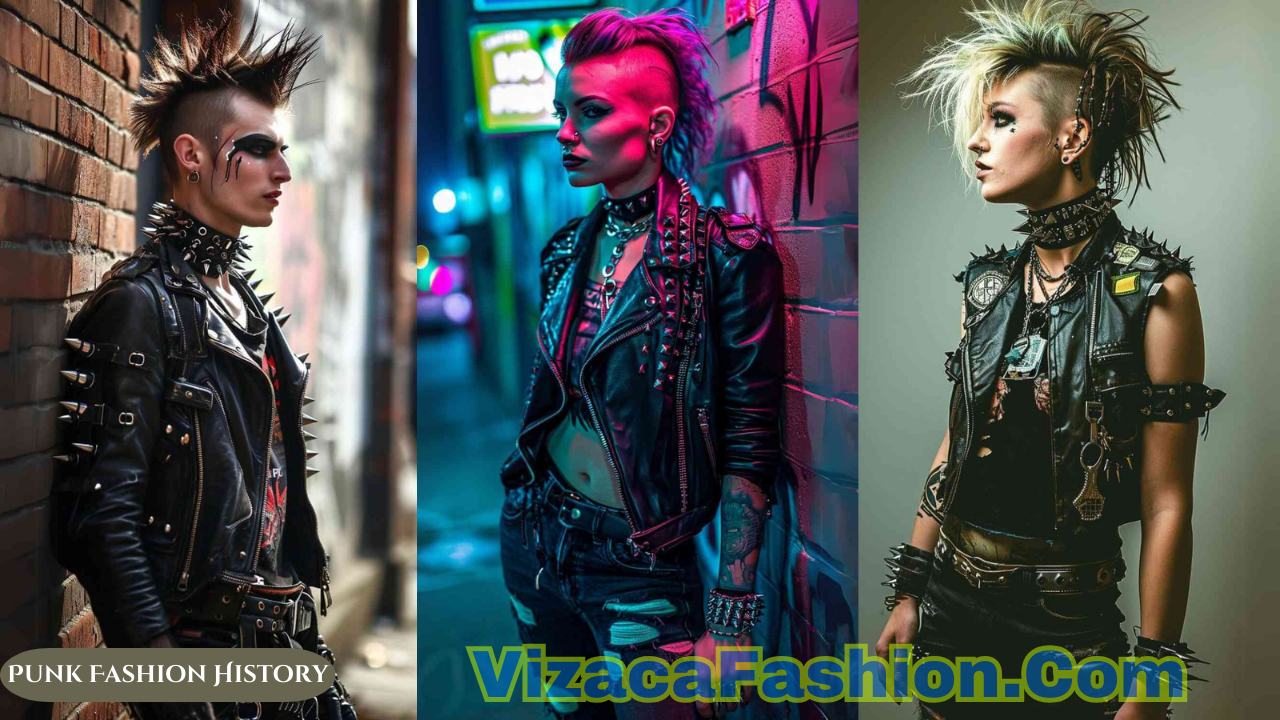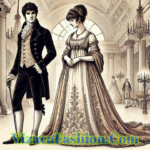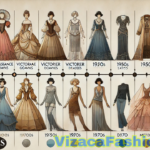Punk fashion is more than just a clothing style; it is a powerful statement of individuality, rebellion, and defiance. Emerging in the 1970s as part of the punk subculture, this fashion phenomenon has become a global symbol of resistance to societal norms and corporate conformity. The history of punk fashion is as dynamic and provocative as the music and ideologies that inspired it. Let’s delve into the evolution of punk fashion, exploring its origins, iconic styles, and lasting legacy.
Origins of Punk Fashion: The 1970s Revolution
Punk fashion first took root in the mid-1970s, alongside the rise of punk music in the United Kingdom and the United States. Bands like the Sex Pistols, The Clash, and Ramones fueled a youth movement that rejected mainstream culture. Early punk fashion was raw and unpolished, a reflection of the anger and disillusionment of the working-class youth who spearheaded the movement.
Key elements of early punk style included ripped T-shirts, leather jackets, and DIY (do-it-yourself) aesthetics. Safety pins, razor blades, and studs became accessories, often symbolizing rebellion against consumerism and a rejection of traditional beauty standards. Vivienne Westwood and Malcolm McLaren, pioneers of punk fashion, popularized these looks through their London boutique, SEX, which became a hub for punk enthusiasts.
DIY Culture and the Spirit of Rebellion
The DIY ethic is central to punk fashion’s identity. Punk enthusiasts often modified or created their clothing, turning ordinary items into statements of protest. For instance, jeans were slashed and held together with safety pins, and T-shirts were emblazoned with provocative slogans or hand-painted artwork. This hands-on approach allowed individuals to express their creativity and disdain for mass production.
In addition to clothing, hairstyles became an essential aspect of punk expression. Mohawks, brightly dyed hair, and spiked styles emerged as bold statements of nonconformity. Haircuts were often self-styled or created by friends, reinforcing the DIY ethos.
The Influence of Music and Politics
Punk fashion is inseparable from the music and political ideologies of the subculture. Bands and artists often inspired specific looks and trends. For example, the Sex Pistols’ chaotic and anarchic energy influenced a preference for shredded clothing and bold makeup, while The Clash’s socially conscious lyrics were reflected in militaristic styles and combat boots.
Punk fashion also served as a platform for political messages. Anti-establishment sentiments, critiques of capitalism, and calls for social justice were frequently displayed through graphic imagery and slogans on clothing. These messages made punk fashion a walking billboard for revolution.
The Rise of Subgenres: 1980s and Beyond
As punk evolved, various subgenres emerged, each with its distinct style. The 1980s saw the rise of hardcore punk, characterized by a more aggressive sound and utilitarian fashion. Hardcore enthusiasts favored plain T-shirts, cargo pants, and sneakers, reflecting a practical and no-frills approach.
Simultaneously, post-punk and new wave movements introduced a more avant-garde aesthetic. Artists like Siouxsie Sioux and bands like Joy Division embraced darker, more theatrical looks, blending punk elements with gothic and experimental styles. This period expanded the visual language of punk, incorporating elements like fishnet stockings, oversized coats, and dramatic makeup.
Mainstream Adoption and Commercialization
By the 1990s, punk fashion began to infiltrate mainstream culture. Designers and retailers co-opted punk aesthetics, transforming them into marketable trends. Grunge fashion, popularized by bands like Nirvana, borrowed heavily from punk’s DIY ethos, emphasizing flannel shirts, ripped jeans, and combat boots.
However, the commercialization of punk fashion was met with mixed reactions. While it brought punk aesthetics to a broader audience, some purists viewed it as a betrayal of punk’s anti-commercial roots. Despite these criticisms, punk’s core principles of rebellion and individuality remained intact, even as its visual elements were adapted by the masses.
Punk Fashion Today: A Timeless Statement
In the 21st century, punk fashion continues to thrive as a symbol of counterculture and personal freedom. Modern interpretations often blend classic punk elements with contemporary styles, resulting in a diverse and ever-evolving aesthetic. Designers like Alexander McQueen, Jean Paul Gaultier, and Vivienne Westwood have incorporated punk influences into high fashion, proving its enduring appeal.
Punk fashion’s legacy is also evident in streetwear and alternative fashion scenes. Distressed clothing, leather accents, and bold accessories remain staples for those who identify with punk’s spirit of rebellion. Social media platforms have further amplified punk fashion, allowing individuals to showcase their interpretations and connect with like-minded communities worldwide.
The Cultural Impact of Punk Fashion
Beyond its visual appeal, punk fashion has left an indelible mark on culture and society. It challenged traditional notions of beauty, gender, and identity, paving the way for more inclusive and diverse expressions of self. Punk’s embrace of androgyny and nonconformity inspired generations to question societal norms and embrace authenticity.
Moreover, punk fashion’s DIY ethos has influenced various creative industries, from music and art to design and film. Its emphasis on individual expression and resistance to conformity continues to inspire movements that seek to challenge the status quo.
Conclusion: The Everlasting Spirit of Punk Fashion
Punk fashion history is a testament to the power of style as a form of rebellion and self-expression. From its raw and unfiltered origins in the 1970s to its modern-day interpretations, punk fashion remains a vibrant and influential force. It is not merely a clothing style but a way of life, a declaration of individuality, and a challenge to societal norms.
As punk fashion evolves, it retains its core values of creativity, defiance, and authenticity. Whether embraced by high fashion or underground scenes, its enduring appeal lies in its ability to empower individuals to express themselves boldly and unapologetically. Punk fashion is, and always will be, a celebration of rebellion in style.


